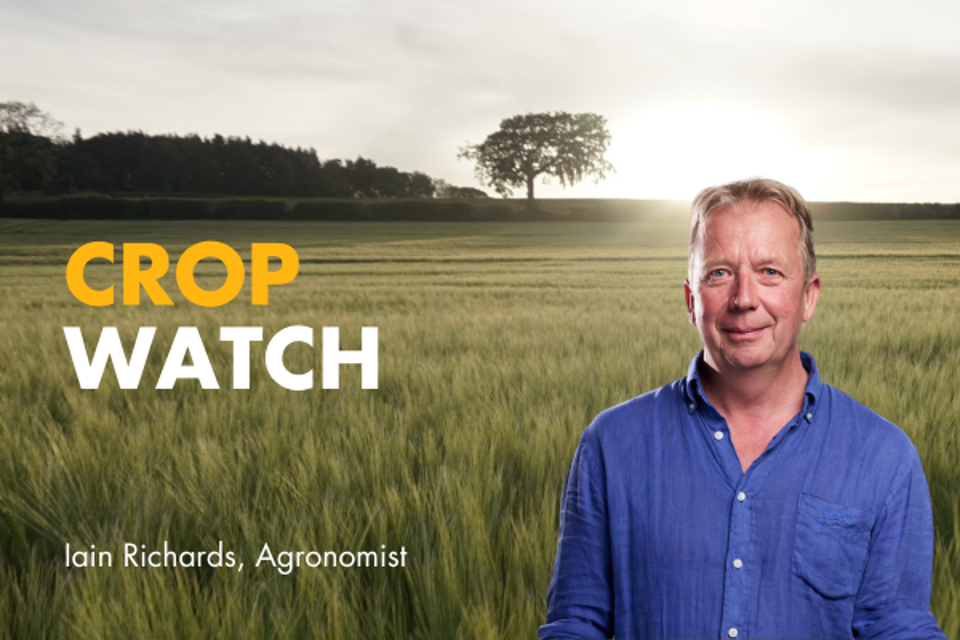
Cropwatch | March 2024
Blog - 20.03.24
We may have had too much of it so far, but what we’re really concerned about now is the lack of moisture we’ll almost certainly be facing once it turns dry.
That, and another winter in which crops have hardly stopped growing, is why we’ve made sure to get good early top dressings on everything, taking full advantage of every opportunity to travel.
Thankfully, we’ve also been able to hold black-grass well at bay by keeping our residual herbicide foot firmly on the gas.
Nutrition remains the top priority for our later-autumn drilled wheats, as well as those only going in after Christmas. While the mild winter has seen the crops suffering most from the early winter deluge recover remarkably well, they need plenty of rooting and tillering assistance; as do the latest drillings which have a long way to go.
We will be focussing their T0s on a root-boosting combination of phosphite and early PGR alongside key micro-nutrients like zinc and manganese. With low disease levels, we’ll also be making strategic use of the elicitor, Iodus (laminarin) in our Septoria defences and looking at some of the other bio solutions which may have a place. And these will be going on a good week earlier than usual as the development clock is well and truly ticking.
It’s completely different for the majority of our wheats. Drilled before mid-October, they are well-rooted and tillered but showing plenty of Septoria as well as yellow and brown rust in places. Limited early fungicide options these days means our main emphasis here will be a holding action of tebuconazole co-formulated with bromuconazole at true T0 timing.
New chemistry does give us some useful extra T1 options. But, with economics as they are, the last thing we want is to have to pull any T1s forward and find we need T1.5s to fill the gap.
Our OSR is also looking pretty good considering how long it has sat with its feet wet. When the companions died back there seemed like a lot of space. But, at 25-35 plants/m2, most of our vigorous hybrids are well-structured as well as rooted, with huge collars and low levels of CSFB larvae.
Most crops are well into stem extension and our priority is making sure they branch as well as they can. Which means a timely application of our preferred growth promoter/fungicide, Architect (mepiquat-chloride, prohexadine-calcium + pyraclostrobin) with the combination of molybdenum, boron and magnesium that tissue testing shows is badly needed.
We are just starting to think about getting our big acreage of spring barley in – some direct drilled; some with conventional cultivation; and, some even behind the plough, depending on conditions.
Our cover crops have done a good job protecting the ground from the worst of the winter – especially as we didn’t rush to spray them off as early as normal.
Regardless of how it is going in, our key spring barley challenge is to do enough to give it a decent seedbed without wasting too much of the moisture that could well be short before we know it!
Join Our Community

Agrii X
We love engaging with clients and partners. Give us a follow and let's share stories for the community.

Agrii Instagram
A picture paints a thousand words. Follow us on Instagram to see what we are up to.

Agrii Facebook
Follow us on the worlds biggest social media site for the latest news and events straight to your feed.

Agrii LinkedIn
If you are all about the business, connect with us on LinkedIn to build your network
Stay In Touch

Journal Sign-Up
Receive email updates on topical news and information from around Agrii and UK Farming.

Listen To Our Podcasts
Listen to the Tramlines Podcast. Fortnightly chat about agriculture and trials with your host Tony Smith.

Agrii Insights
Read essential agri intelligence for profitable farming.

Find an Event
Join us for our upcoming events and tours.



